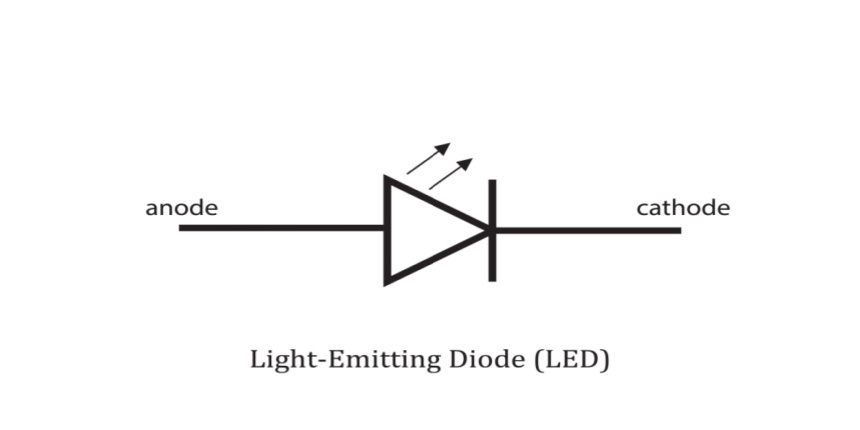LED Full Form
What is the full form of LED?
The full form of LED is Light Emitting Diode. LEDs are special kind of semiconductor diodes that emit light when current flows through them and it can flow in only one direction. This process is called electroluminescence. LED works on the principle of electroluminescence. The emitted light may be either in the visible range or in the non visible range. LEDs have two terminals called anode and cathode. LEDs are formed by merging P and N type semiconductor material. LED is basically a photoelectronic device which can convert electrical energy into light energy under forward bias condition.
History of LED
In 1907, Henry Joseph Round discovered for the first time that when a potential of 10 Volts is applied to silicon carbide crystal, it emits yellowish light.
In 1962, Nick Holonyak invented the first red luminescence diode. This was the first LED with a visible wavelength.
In 1971, Shuji Nakamura invented the first blue LED.
The first yellow LED and a brighter red LED was invented In 1972 by George Craford
Thomas P. Pearsall invented high brightness LED in 1976, for use with fibre optics in telecommunications.
The Symbol and Principle of LED
LED is represented by the following symbol:

This symbol is almost similar to the symbol of diode but here we can see two arrows which indicate the symbol of LED.
LED is a heavily doped PN junction diode which can emit spontaneous radiations under forward bias. We know that the device is said to be in forward bias condition when positive potential of the battery is connected to P side and negative potential of the battery is connected to N side which is shown in the figure given below.

In the light emitting diode, the recombination of the charge carrier takes place. The electron from the N side and the hole from the P side are combined and give energy in the form of light and heat. The process of emitting light in response to the flow of electric current is called electroluminescence which is the basic principle of light emitting diode.
Materials used in LED and types of LED
GaAs - Gallium Arsenide is used to make Infrared LED and we use it in remote control.
GaP - Gallium Phosphide material is used to make red or green LED
GaAsP - Gallium Arsenide Phosphide is used to make red or yellow LEDs
These are the common popular materials which manufacturers used to make LEDs with different colours.
Here is the list of various types of LED which can be made using semiconductors:
Miniature LEDs
Alphanumeric LED
Bi and Tri Colour LED
Lighting LED
Flash LED
Red Green Blue LEDs
So, we can say that LEDs are available which emit light in the different colours like red, green, yellow and amber.
Applications of LED
Following are the various applications of LED:
LEDs are used in automobile headlamps, lighted wallpaper and medical devices
LEDs are used in digital computers and calculators
At the traffic signals LEDs are used
LEDs are used in mobile phones to display the message
LEDs are used in digital watches and camera flashes
LEDs are used in microprocessors and multiplexers
Advantages of LED
Here is the list of few advantages of LED:
Brightness of LEDs can be easily controlled by varying the current.
LEDs are generally light in weight and smaller in size.
LEDs are very cheap and rapidly available and they consume low energy.
LEDs operate very fast and they can emit different colours of light.
LEds are available in different spectral colours and they have longer life as compared to the lamp.
LEDs are very economical and easily available and their quantum efficiency is very high.
Frequently Asked Questions (FAQs)
The lifespan of LED is much longer than for regular light bulbs and at the same time it consumes several times less energy than the old type of lighting. This is the main advantage of LEDs as compared to regular light bulbs.
The average lifespan of LEDs is approximately around 10 to 20 years.
LEDs help in thinning the backlight design of our smartphones and also makes it within a low cost. While the price of LEDs can vary as per the sizes of the display of the smartphone, the lower output voltage ensures a longer battery life. Because of these reasons, we use LEDs in smartphones.
The process of adding impurities to the intrinsic or pure semiconductor is called doping.
When we increase the value of forward current, the intensity will increase but later on after a certain limit, it starts declining.